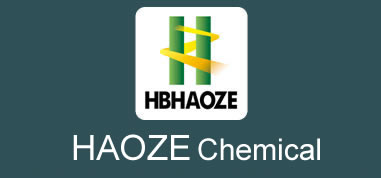SBR Latex in the Paper Coating Industry
Styrene butadiene latex, or SBR latex, plays a pivotal role in the paper coating industry, acting as a core component within synthetic latex formulations. Representing about 20% of synthetic rubber production and an impressive 80% of synthetic latex output, SBR latex is an essential binder in the formulation of paper coatings. While its proportion in coatings is modest—around 10% by weight and 20% by volume—its impact on both coating and printing performance is significant.
Key Functions of SBR Latex in Paper Coating
The primary function of SBR latex in paper coating is to enhance the surface strength of coated paper, enabling it to withstand the printing process. During the drying phase of the coating, SBR latex particles interact with the water’s surface tension, migrating along the movement of water. This migration allows the latex particles to congregate at the points where they meet the pigment, effectively binding the pigments together. To function as an efficient binder, SBR latex particles must remain evenly dispersed and stable within the coating’s water phase, ensuring consistent and effective binding properties.
Enhanced Adhesion and Water Resistance
In addition to its role as a binder, SBR latex improves the adhesion of the coating to the paper surface, thereby enhancing the overall quality and durability of the paper. It also contributes to water resistance, helping to delay the absorption of printing inks and moisture during the printing process. By filling the gaps between the pigment particles, SBR latex helps to organize the pigment’s orientation and reduces the permeability of the coating layer. This results in a more uniform, smooth surface that is ideal for high-quality printing.
Modifying SBR Latex for Enhanced Performance
To fully exploit the multifunctional benefits of SBR latex, it is often modified by introducing functional monomers, such as unsaturated carboxylic acids. This modification process enhances the mechanical stability and viscosity of the latex, improving its adaptability in coatings and increasing the strength of the coated paper. The incorporation of these functionalized monomers allows for several performance improvements, including better print gloss, reduced adhesive requirements, and fewer printing defects.
Benefits of Functionalized SBR Latex in Paper Coating
Highly functionalized SBR latex offers a range of advantages for paper coatings. These include:
Elimination of Printing Defects: The enhanced properties of functionalized SBR latex help reduce common printing issues, resulting in cleaner, more consistent prints.
Exceptional Print Gloss: The latex’s ability to improve surface smoothness and stability contributes to a higher-quality gloss finish on printed paper.
Reduced Adhesive Requirements: The superior adhesion properties of modified SBR latex reduce the need for additional adhesives, streamlining the coating process.
Increased Strength Performance: The added functionality strengthens the coated paper, ensuring it can handle higher stress during processing and printing.
Improved Coverage: Even with minimal coating application, functionalized SBR latex ensures excellent coverage, helping to reduce material costs while maintaining quality.
Compatibility with High-Speed Coating: Functionalized SBR latex is compatible with high-speed, high-solid-content coating processes, making it suitable for industrial-scale paper production.
Conclusion
SBR latex plays an indispensable role in the paper coating industry, offering crucial functions such as binding, enhancing surface strength, improving water resistance, and optimizing print quality. By incorporating functional monomers into its structure, SBR latex’s performance is significantly enhanced, contributing to reduced defects, better gloss, and overall superior performance in high-speed manufacturing environments. As a result, SBR latex continues to be a cornerstone material in the production of high-quality coated paper, enabling advanced printing techniques and ensuring long-lasting durability in final products.
Last:How to Choose Latex Adhesives for Your Carpet Needs
Next:最后一页









 Home
Home product
product Tel
Tel Menu
Menu